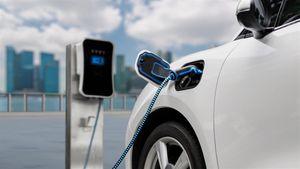Electrical Power & Control has published a new guide on how to prevent catastrophic electrical failures in industrial settings.

-- In its latest guide, Electrical Power & Control covers common causes of electrical catastrophes, possible chain reactions that may damage components and trigger system collapse, and how to reduce the risks of disruptions through preventative measures and emergency planning.
For more information, please visit https://electricalpowerandcontrol.com/how-prevent-industrial-electrical-catastrophe/
The team at Electrical Power & Control defines an electrical catastrophe as a sudden, large-scale failure of an electrical system that results in disruptions to operations. Catastrophic events include substation fires, arc blasts, voltage spikes, and overloaded panels, all of which can cause blackouts across connected systems and potentially endanger human life.
While these disasters occur frequently throughout many industries, they are often preventable and can be avoided with the appropriate maintenance protocols, says the company.
Common causes of disasters are aging infrastructure, loose connections, overloaded circuits, environmental stress, arc flash and blast, poor maintenance, and installation errors. Dusty, humid, or high-vibration environments can corrode conductors and wear down insulation, which may result in arc flashes or thermal runaways. Outdated equipment is also prone to breakdowns or overloads, and the risk of these events increases if facilities expand without upgrading their electrical systems.
For newer systems, design and installation errors may cause premature degradation of parts. A single failure in one component may trigger chain reactions that result in damage to other components, leading to downtime, loss in revenue, and costly repairs.
To avoid power outages, Electrical Power & Control's technicians say it is important for facilities to evaluate their electrical systems regularly to ensure they are operating as intended. Infrared thermography is effective for this purpose, as the tool can identify overheating breakers, imbalanced load distributions, and failing contactors.
The guide also recommends installing smart sensors and predictive analytics into newer systems; these can provide customers with asset-specific risk detection and automatically adjust parameters.
Additionally, facilities can bolster the reliability of their electrical systems by ensuring they are designed with redundancies, such as dual feeds, ATS, or parallel breakers; surge and overload protection; and built-in shutdown paths, among other options.
Finally, Electrical Power & Control says that property owners should always be aware of their baseline and schedule routine inspections, as these will help them identify abnormalities before they become an issue.
For more tips on industrial electrical safety, please visit https://electricalpowerandcontrol.com/how-prevent-industrial-electrical-catastrophe/
Contact Info:
Name: Pat Sims
Email: Send Email
Organization: Electrical Power and Control
Address: 1639 Springhill Rd., Talladega, AL 35160, United States
Website: https://electricalpowerandcontrol.com/
Source: PressCable
Release ID: 89171998
In case of identifying any errors, concerns, or inconsistencies within the content shared in this press release that necessitate action or if you require assistance with a press release takedown, we strongly urge you to notify us promptly by contacting error@releasecontact.com (it is important to note that this email is the authorized channel for such matters, sending multiple emails to multiple addresses does not necessarily help expedite your request). Our expert team is committed to addressing your concerns within 8 hours by taking necessary actions diligently to rectify any identified issues or supporting you with the removal process. Delivering accurate and reliable information remains our top priority.






